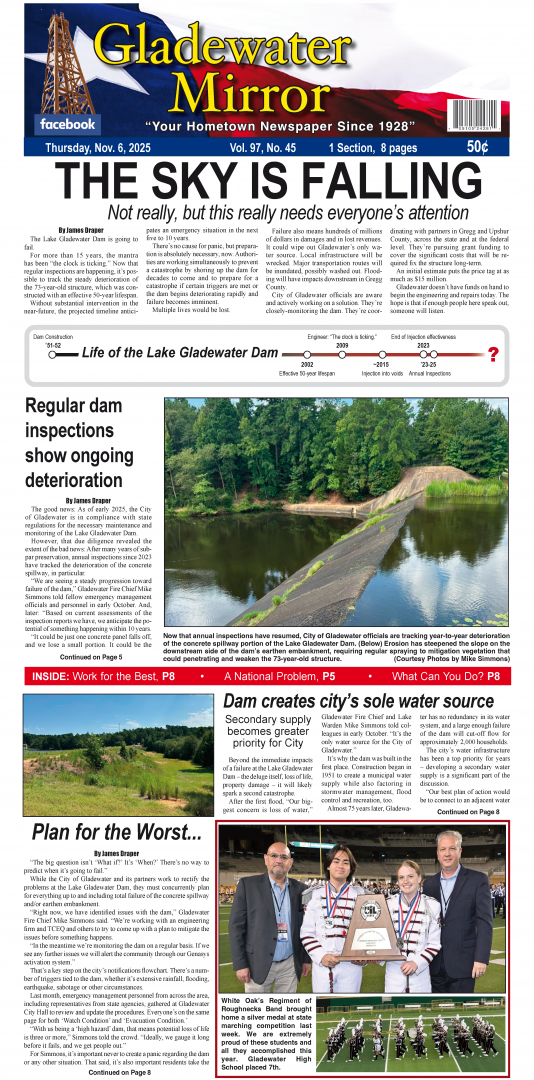This is the SEVENTH and final installment of a series of stories focused on the Lake Gladewater Dam and published in the Nov. 6, 2025, issue of the Gladewater Mirror |
Part 1: The Sky is Falling
Part 2: Regular dam inspections show ongoing deterioration
Part 3: Gladewater dam creates community’s sole water source
Part 4: Plan for the Worst…
Part 5: …Work for the Best
Part 6: What can you do?
Part 6: Aging dams become common problem for U.S. communities
Add’l: Lake Gladewater Dam (Landscape Ecology assessment by E. Simpson, Aug. 2, 2024)
The Lake Gladewater Dam is exhibiting many of the same symptoms of long-term degradation common to both concrete structures and earthen embankments across the United States.
Gladewater’s not alone as far as the age of its dam, either, not by a long-shot.
The American Society of Civil Engineers estimated more than 85 percent of all dams in the United States are than 50 years-old, the typical useful lifespan.
As of 2009, there were more than 13,000 classified as “high hazard” in the United States. At that time – more than 15 years ago, when an engineer declared “The clock is ticking” at Gladewater’s dam – approximately 30 percent of those at-risk structures had not been inspected in five years, even though each warrants an annual inspection.
According to L. David Givler, a technical expert in hydrology and hydraulics and the president of Givler Engineering in San Antonio, Gladewater is seeing common problems at its dam. Needless to say, they’re costly to repair, and they’ll get more expensive as deterioration continues and more problems arise.
“There are a lot of dams around that are older than this one that are earth embankments,” Givler confirmed. “Lots of times when they were built, they didn’t meet modern design standards.
“A lot of them, on the slopes, they became unstable over time.”
He encounters two particular clusters of dams in the United States very frequently – those constructed right after World I and right after WWII.
“Everybody came home and they were trying to get back to life. They had a new experience for how big the world was, they come home and they build a dam,” Givler explained. “There are a lot of early dams from the early ’20s and the late ’40s, a lot of them, out there. They did amazing stuff.”
That said, they’re getting older every day.
– By JAMES DRAPER









